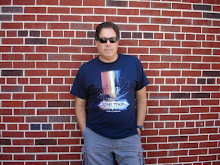Wednesday, October 23, 2013
MAN WHO KNEW TOO MUCH, THE (1934)
(March 1935, U.S.)
Even if none of you film fans are too familiar with Alfred Hitchcock's early British period, you've likely heard of THE MAN WHO KNEW TOO MUCH because he remade it himself with James Stewart and Doris Day in 1956 (but we'll get to that later). The original black and white film is quite different in setting, tone and plot details, and in my humble opinion, it's better than the remake (but we'll get to that later).
The film opens with the snowy mountains of Switzerland where British married couple Bob and Jill Lawrence (played by Leslie Banks and Edna Best) are vacationing with their daughter Betty (played by Nova Pilbeam). They subsequently befriend a foreign gentleman named Louis Bernard (played by Pierre Fresnay), who is staying in their hotel also. One evening, as Jill dances with Louis, she witnesses his assassination as a French spy when a shot penetrates the glass pane and then his body. Before he dies, the spy passes on to them some vital information that must be delivered to the British consul. Before the couple can act on this, they learn that Betty has been kidnapped in order to keep them quiet. These criminals are lead by Abbott (played by Peter Lorre) and we eventually learn that their ultimate plan is to have the head of state of an unidentified European country assassinated during a concert at the Royal Albert Hall. Lorre, by the way is just as sinister looking (and acting) as any other film who may have seen him in like Fritz Lang's M, CASABLANCA or THE MALTESE FALCON. Take a look...
And so, unable to go to the police, Bob and Jill pursue leads that will help rescue their daughter and prevent the assassination. While this film doesn't move at a particularly quick pace, nor does it have any sort of musical soundtrack to accompany the story, their is, to its credit, a rather intense shootout between the bad guys and the police on the street (but again, to no music). In an interesting twist, it's Betty's mother (a crack shot with a rifle) who takes down the criminal bent on capturing her daughter on a rooftop. The bad guys are defeating and the child is reunited with her parents. Happy ending, indeed!
Although an enjoyable film, it's not my favorite of Hitchcock's British film (I still can't make up my mind if that honor goes to THE 39 STEPS or THE LADY VANISHES). What actually succeeds in holding my interest to this film is the considerable disappointment that I hold with the 1956 remake; in other words, the bad makes the good look better. The plot is more or less the same and James Stewart remains my favorite classic actor of all time. The real problem for me is Hitchcock's rather cheap shot at plugging Doris Day's singing abilities with her repeated performance of her song, "Kay Sa Ra Sa Ra". Seriously?? A Hitchcock with musical numbers in it?? This is not only unacceptable, in my opinion, it's downright tragic and completely ruins the film for me. Frankly, with the exception of Cecil B. Demille and his 1956 version of his own THE TEN COMMANDMENTS, I've never really understood the concept of directors remaking their own films. Really, what's the point? Move on, I say! The original film of THE MAN WHO KNEW TOO MUCH also has that exciting climactic shootout I mentioned, which brings the excitement of the plot full circle.
Favorite line or dialogue:
Jill Lawrence: "Ah, my love!"
Clive: "Ah, my darling!"
Bob Lawrence: "My lunch!"
Subscribe to:
Post Comments (Atom)




No comments:
Post a Comment